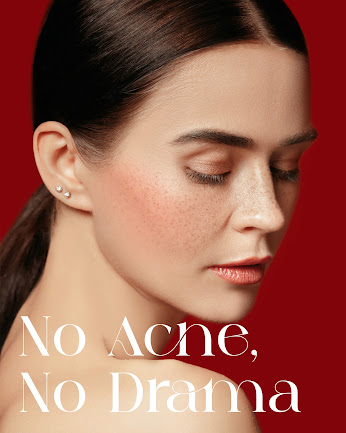How to Identify Your Skin Type at Home – Simple, Reliable Tests for Every Woman
Why Knowing Your Skin Type Matters
When you know whether your skin is oily, dry, combination, normal or sensitive, you unlock the ability to:
-
Choose cleansers, serums and moisturizers tailored to your skin’s needs.
-
Prevent unnecessary irritation, make-up slips, clogged pores or flakiness.
-
Save time and money by investing in products that genuinely complement your skin.
-
Build a confident skincare routine rather than a trial-and-error one.
Four Simple Tests You Can Do at Home
1. The Bare-Face Observation
-
Cleanse gently and pat dry.
-
Wait 30–60 minutes with no product applied, just your skin in its natural state.
-
Then observe:
-
If your skin feels tight or looks flaky → dry.
-
If you notice shine across the whole face and visible pores → oily.
-
Shine mostly in the T-zone (forehead, nose, chin) but cheeks look normal or dry → combination.
-
No conspicuous oil or dry patches, skin feels comfortable → normal.
-
If there’s redness, stinging or sensitivity → possibly sensitive.
-
2. Blotting or Tissue Paper Test
-
Press a clean blotting sheet or piece of tissue onto your forehead, cheeks, nose, and chin.
-
Hold it up to the light and check oil marks:
-
Lots of oil all over → oily skin.
-
Virtually no oil → dry skin.
-
Oil only in the T-zone, little on the cheeks → combination skin.
-
Balanced (some sheen but not heavy) → normal skin.
-
If you feel irritation while doing this or see redness → move toward sensitive skin category.
-
3. Pore & Texture Check
-
In a mirror, inspect your pores and the surface texture:
-
Large, visible pores, especially on cheeks or nose → common with oily skin.
-
Fine smooth surface, pores barely visible, but skin feels tight → dry type.
-
Pores more visible in the T-zone but smoother elsewhere → combination.
-
Even texture, comfortable feel → normal.
-
Uneven texture + visible redness or reactions → sensitive skin.
-
4. Reaction to Products & Environment
-
Apply a gentle, fragrance-free moisturizer or gel (for example, an aloe-based gel).
-
Wait 15–30 minutes and monitor how your skin behaves:
-
If it stings, becomes red, or you feel burning → sensitive.
-
If it remains calm, comfortable → likely not sensitive.
-
-
Also take note of how your skin responds to weather changes (heat/humidity vs cold/dry).
Matching Your Skin Type to Care & Ingredients
Once you’ve identified your skin type, you can adopt a targeted approach:
| Skin Type | Key Concerns | What to Use / What to Avoid |
|---|---|---|
| Oily | Excess shine, large pores, breakouts | Use lightweight gel cleansers, oil-control formulas; avoid heavy creams and thick oils. |
| Dry | Tightness, flakes, uneven texture | Use hydrating cleansers, rich moisturizers, barrier-repair ingredients like ceramides; avoid harsh foams and alcohol-based products. |
| Combination | Mixed zones (oily T-zone, dry cheeks) | Use balancing cleansers, lightweight for T-zone, richer for dry areas; avoid one-size-fits-all heavy creams. |
| Normal | Balanced skin, minimal issues | Gentle cleanser, lightweight moisturizer, maintain with antioxidants and sun protection. |
| Sensitive | Reactivity, redness, irritation | Use fragrance-free, alcohol-free, soothing ingredients (aloe vera, cica); avoid strong actives, harsh exfoliants, heavy fragrance. |
When a Professional Check-Up Helps
If you experience persistent breakouts, sudden changes in your skin (texture, pigmentation, sensitivity), or nothing you try seems to work it’s wise to consult a dermatologist. Sometimes underlying concerns like hormonal imbalance, rosacea, or barrier damage require expert care.
Final Thought
Your skin is unique understanding how it behaves gives you the power to make smart choices. Use these at-home tests this week to identify your skin type, then build your routine accordingly: cleanse smartly, treat with intention, and protect with commitment. With clarity and consistency, you're well on your way to healthier, happier skin.
FOR MORE INFORMATION VISIT
Cathy Doll Fresh Aloe Vera Soothing Cleansing Gel: The Secret to Clear, Glowing Skin
Cathy Doll Anti-Acne Cushion Facial Foam Cleanser: Your Ultimate Solution for Clear, Glowing Skin
3-in-1 Glow: Cathy Doll Make-Up Remover Toner Serum Foam Cleanser
6 Signs Your Skincare Routine Isn’t Working And How to Fix It
Why Cathy Doll Stands Out in Skincare: Unlock Your Best Skin Yet
Achieve Clear, Shine-Free Skin with Cathy Doll Acne Oil Control Cleansing Foam
Duo Hya Micellar & Amino Acid Cleanser – Cleanse, Hydrate & Glow
Cathy Doll Duo Bright Up Micellar Amino Acid Cleanser: The Secret to Clean & Radiant Skin




Comments
Post a Comment